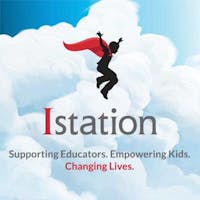I grew up in a household with two system engineers. When I began teaching, my childhood comfort with technology followed me into the classroom; I was always thrilled to introduce new hardware or software to my students. Yet for all my tech advocacy and usage, my sons are interacting with technology in ways I couldn’t have imagined even a few short years ago and—on some occasions—in ways I simply can’t understand.
Here’s a typical conversation with my 12-year-old:
Son: I don’t understand this homework. I have to use my computer to make a stop motion video about erosion for science. Can you help?
Me: Sure! What are your struggling with? The concept of erosion or with making the video?
Son: The video. We’re suppose to make a green screen, use this free app the teacher told us about, and include sound and clickable content. I have to turn it in on a flashdrive as an MP4 file and upload it to Youtube.
Me: Some of those steps are beyond my expertise. Can you show me the way you learned and I’ll see how I can help?
At this point, my son and I either troubleshoot the issue smoothly and leave the table feeling mutually educated, or we struggle to communicate across the gaps in our knowledge and part feeling frustrated. When the latter happens, I find myself asking where the gap in communication really is: between me and my child or between me and his school?
I’m certainly not alone in feeling this way. A 2015 study from the Family Online Safety Institute found that 20% of parents think their children know more about technology than they do. That percentage increases as children grow older; 44% of parents with kids age 14-17 report feeling less knowledgeable about technology and online activities than their offspring.
As children come home with work that necessitates a technological literacy parents don’t have, the result can be what I call a flipped household. I use this term because the flipped household is often the result of a flipped classroom, an increasingly common practice that prioritizes interactivity and class participation over lectures. The philosophy behind the flipped classroom is great; students can view or listen to lessons at home and at their own pace. There’s a great deal of research showing that the flipped classroom approach leads to positive results, including increased attendance and graduation rates.
When classrooms flip, students are often required to engage with new technologies at home—such as learning platforms, social media, and the cloud. And parents may find themselves struggling to understand what their kids are doing. The question for educators then becomes, how can we guide parents through the flipped classroom process so they can continue to support their children’s learning needs?
At Istation, we know educators can reduce parent frustration by forming and maintaining a solid school-to-home connection. In fact, when facilitated well, everyone can benefit from the flipped classroom model: students can engage deeply with content at their own pace and parents can gain tech literacy. We’ve built our program specifically to help students, parents, and educators stay connected. Yet, while our program acts as a bridge between school and home, it needs educators who are willing to help build it.
Principal Chantel Kastrounis is one of those educators. Anticipating the growing technology divide between parents and their children, she recently tried something new at Richard J. Lee Elementary in Dallas, TX; she held a “Tech Know Saturday” event for parents. Throughout the day, both designers (teachers) and learners (students) hosted sessions that helped between 200 and 300 parents understand how to use technology as functional learning tools, keep their children safe online, navigate digital communications, and more.
Kastrounis says Tech Know Saturday was a direct response to the knowledge gap between parents and children. “As a Title I school, we need to have events that build on the partnership between home and school. We conducted a parent survey to see what events parents most wanted and they identified technology and math as the two key areas of concern.” By surveying and responding to the needs of its parents, Kastrounis has significantly increased the connection between school and home. “We used this as an avenue to train and model for our parents how we are using technology and how they could use that technology at home,” he adds. “It has really opened up the door of communication and partnership.”
Developing a home-to-school partnership can be as simple as sending home tutorials and resources that help parents access and navigate new technology; these materials also position the school as one part of a collaborative team. And technology sessions like the one Kastrounis hosted are becoming increasingly popular. If you want to organize a digital learning event for parents, we suggest you keep these tips in mind:
- Have childcare available so that parents can devote their attention to the sessions.
- Involve students: let them showcase what they know.
- Give parents time to practice the skills you teach them.
- Provide handouts for parents to refer back to later.
We may never close the technology gap between the generations, but we must begin taking intentional steps to make the flipped household as beneficial as the flipped classroom. It’s time to change the dialogue; no one should leave the table frustrated.
Learn more about keeping parents connected in a flipped classroom environment by reading our free eBook.



